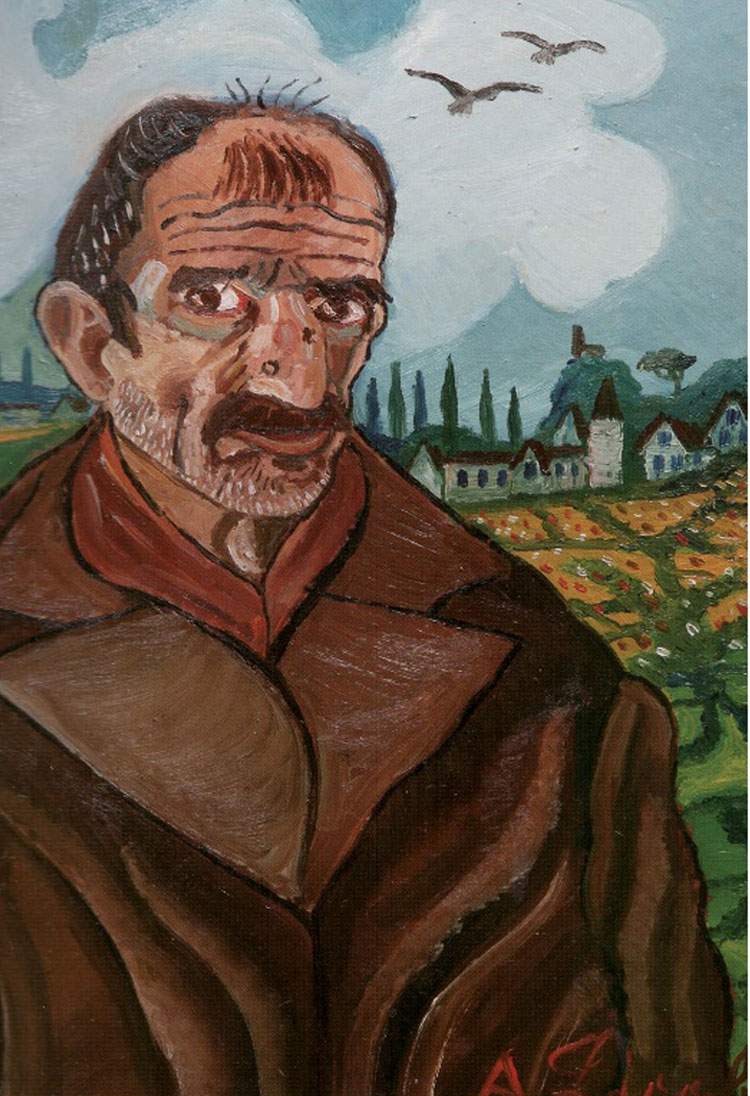Starting June 6, Palazzo Bentivoglio in Gualtieri (Reggio Emilia) is hosting the exhibition Incompreso. The life of Antonio Ligabue through his works, open to the public until Nov. 8, 2020.
Promoted by the Antonio Ligabue Museum Foundation and the Municipality of Gualtieri and curated by Sergio and Francesco Negri, the exhibition features twenty-two paintings, some bronzes and a terracotta cast: all works from private collections. The exhibition itinerary is divided into periods, in chronological order, so that visitors can well understand the evolution of style, technique, and the main themes addressed during his artistic activity. The exhibition has been set up in the Salone dei Giganti, a large frescoed room whose size guarantees a safe visit.
On display in the Salone dei Giganti are several masterpieces, such as The Serpentarium and Eagle with Fox, which depict animals in motion, Swiss Castles (which had not been exhibited in Gualtieri since the 1970s), the famous Self-Portrait with Scarecrow and Diligence with Landscape (a work included, as well like others in the exhibition, in Giorgio Diritti’s film Volevo nascondermi (I Wanted to Hide), with Elio Germano ’s masterful performance, which was awarded the Silver Bear at the Berlin Film Festival and the Ribbon of the Year 2020). The director himself had told Francesco Negri during filming that he had been in Gualtieri in 1975 and fell in love with Ligabue’s research after seeing the painting Diligence with Landscape.
“Antonio Ligabue’s work,” Sergio Negri explained, “can be divided into three periods. In the first period (1927-1939) the colors are very soft and diluted. Themes related to rural life and scenes with ferocious animals in not excessively aggressive attitudes are usual; very few self-portraits. The second period (1939-1952) is marked by the discovery of fat, full-bodied subject matter and an analytical refinement of all representation. The third period (1952-1962) is the most prolific phase. The sign becomes vigorous and continuous, to the point of distinctly detaching the image from the rest of the scene. Dense in this last period is the production of self-portraits, diversified according to the moods experienced at the time of execution.”
Enriching the exhibition are documents on Antonio Ligabue’s life, Raffaele Andreassi’s 1961 documentary film and some photographs dating back to the 1950s, taken by Walter Breveglieri, which immortalize Ligabue with his Moto Guzzi.
Hours: Saturday from 10 a.m. to 1 p.m. and 3 p.m. to 7 p.m., Sunday from 10 a.m. to 7 p.m. (with last admission at 6 p.m.). For a safe visit, access will be limited to a maximum of 20 people per 45 minutes, with priority given to those booked.
Tickets : Full 5 euros, reduced 3 euros.
For information and reservations: call +39 0522 221853 or +39 349 2348333, write to info@museo-ligabue.it or visit www.museo-ligabue.it.
Image: Antonio Ligabue, Self-Portrait (1955-56; oil on faesite panel, 45 x 35 cm)
 |
| In Gualtieri the exhibition that tells the life of Antonio Ligabue through his works |
Warning: the translation into English of the original Italian article was created using automatic tools. We undertake to review all articles, but we do not guarantee the total absence of inaccuracies in the translation due to the program. You can find the original by clicking on the ITA button. If you find any mistake,please contact us.